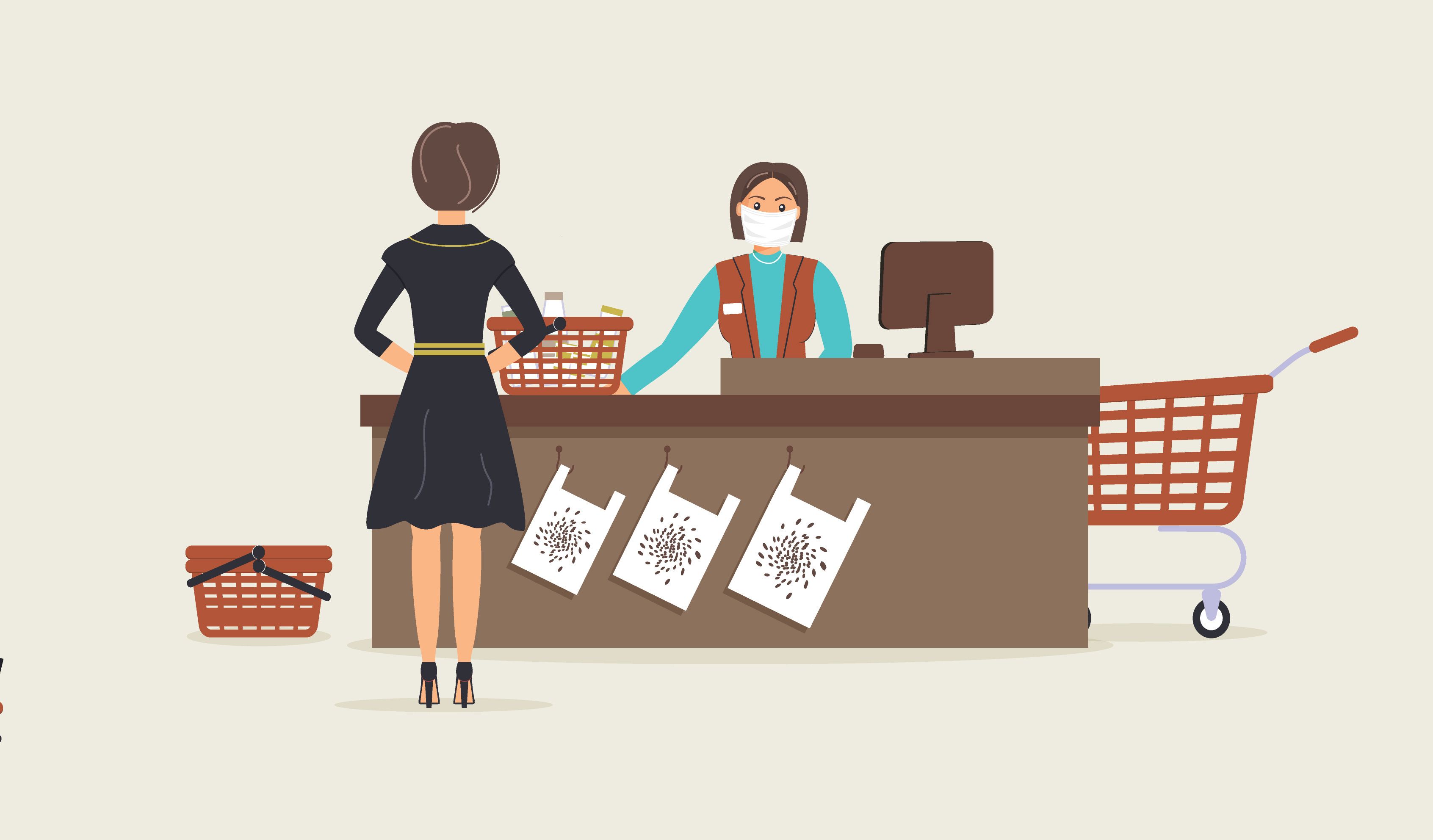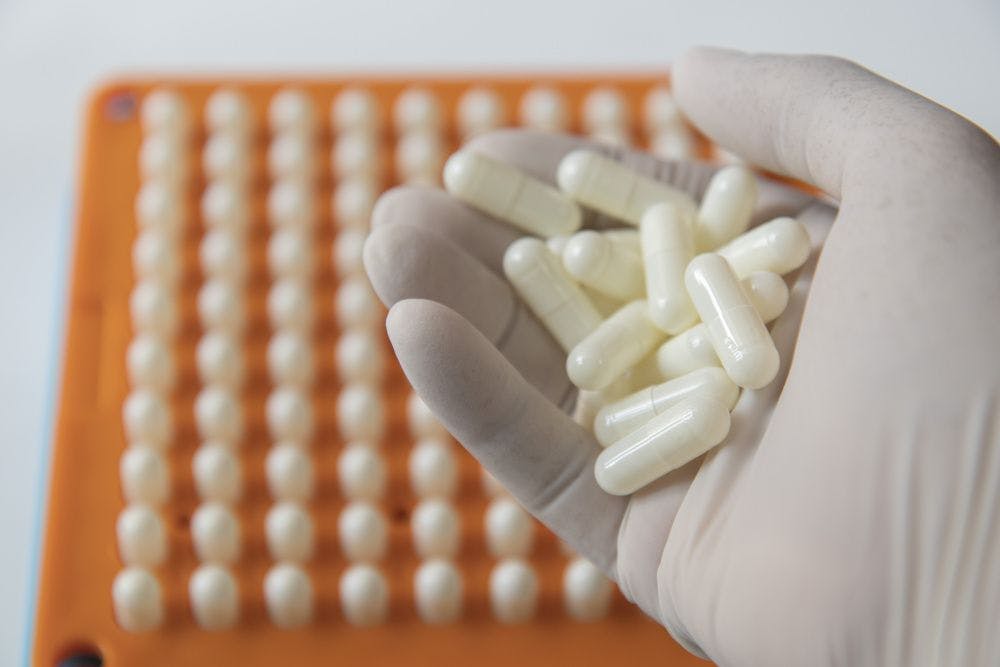Judging by both conventional wisdom and cold, hard data, health-and-wellness retailers with a strong e-commerce presence fared just about as well during the COVID-19 pandemic as one could hope, all things considered. But does that mean that brick-and-mortar outlets—from natural-food shops to major drug chains—are on life support?
Not necessarily. After all, as anyone who visited their neighborhood supermarket in the early days of lockdown knows: That’s where the action was.
Wellness-oriented retailers may even have a unique advantage in the coronavirus era, given consumers’ growing interest in shopping proactively for health. But challenges to brick-and-mortar will remain, even once the coronavirus is gone. So we sat down with sector watchers to get their outlook for our industry’s physical distribution points going into 2021.
Going Gangbusters
Let’s lead with the good news. As Lisa C. Buono, principal, healthcare practice, IRI (Chicago), puts it, “the supplement space has really exploded” in the traditional brick-and-mortar food, drug, mass, club, and dollar stores that IRI follows. “In all my years working in the OTC and supplement spaces”—and 2021 marks her 40th—“I haven’t seen as robust a run of sales growth as the one produced by this pandemic.”
Jeffrey Crumpton, retail business consultant, SPINS Media LLC (Chicago), agrees, noting similar patterns in the retail channels that he and SPINS watch. While overall brick-and-mortar sales growth for natural foods, dietary supplements, and health-and-wellness products peaked in March 2020 before leveling off in the near term, according to SPINS, it still ended the four weeks through October 4, 2020, up about 12% for all products, and up 14% for natural products in all channels.
Sales at natural-focused retailers also peaked in March, Crumpton says, staying in line with the total channel at 11% growth over the four weeks ending October 4, 2020. And within SPINS’ proprietary channels, regional grocery saw the strongest growth, finishing those same four weeks up 16%.
But not every brick-and-mortar sector enjoyed a COVID boom. “Growth rates at health and vitamin stores saw the sharpest declines during the stockpiling weeks and have slowly started to recover those steep declines from earlier in the year,” Crumpton says. Nevertheless, they remained down 9% year-over-year as of the four weeks ending October 4, 2020.
Give Them What They Want
In any event, the question on everyone’s mind now, Buono says, is whether or not the growth can last. And though she suspects sales will remain strong, “It’s hard to believe that the industry will continue piling on such growth once we hit mid-March comparisons to a year ago.”
Yet even if sales flatten relative to what they were at the pandemic’s outset, the market would still find itself at a level that—given previous annual growth rates of roughly 7% at best—it would have taken some three years to reach, she figures.
The next question on everyone’s mind: How are retailers summoning such growth at a time when consumers are scared, shopping is restricted, and recession looms—if it hasn’t already arrived for some?
In short, Buono says, they’re giving consumers what they want.
“We see our traditional retailers putting more emphasis on supplements in response to consumer demand for items that support healthy immune systems,” she points out. The upshot: Vitamins C and D, zinc, and elderberry supplements have been the pandemic’s “prime beneficiaries.” Buono’s also observed retailers dedicating more real estate to such products both on shelves and in endcaps.
But much of brick-and-mortar’s strength boils down to—believe it or not—consumer choice, which hasn’t shifted entirely online, or toward contactless delivery, just yet.
In fact, Buono thinks that food, club, and dollar stores have actually benefited from foot traffic during the pandemic for the simple reason that these outlets provide consumers a one-stop option wherein they can tackle their grocery, personal-care, and supplement shopping in one trip. Get in and get out, as it were.
Safety First
That’s an attractive proposition for consumers leery of lingering in public any longer than is necessary. And it helps explain why retailers who do their part to keep their shopping environments safe also enjoy continued patronage.
As for what “doing their part” means, Buono points to policies like freely offering sanitizing wipes and dispensers, requiring social distancing and masks, enforcing one-way traffic controls in aisles, sanitizing checkout areas regularly, and even offering drive-through pickup in parking lots.
Crumpton, too, thinks that consumers will remain “more geared toward their preferred retailer, but only if that retailer has taken appropriate safety measures.” If not, he says, “Consumers have proven willing to change their shopping preferences to retailers that do.”
Thus, he concludes, “Safety protocols are the most important consideration here.” And his advice to brick-and-mortar outlets: “Retailers should be publicizing their efforts to keep shoppers and employees safe.”
Transformational Change
But amidst all these positive observations, the fact remains that while brick-and-mortar stores have seen a tidy COVID bump in wellness sales, the pandemic acted as a virtual catapult for such purchases made online. According to SPINS, internet sales were up fully 80% for the four weeks ending October 4, 2020.
And it’s easy to see why.
Early in the pandemic, instore out-of-stocks drove consumers to their laptops and smartphones, as did fears about catching the virus in crowded stores. And while the shift to online health-and-wellness shopping has been a learning experience for some—especially consumers new to internet shopping—“Many of them like it and will likely continue shopping this way going forward, at least in part,” Buono predicts.
But Buono also notes that hidden in the eye-popping online sales data is the fact that much of the online spend comprises reorders, rather than new-product discovery. And here, she says, “Brick-and-mortar stores still best provide that shopping and browsing experience.” Sure, online portals can help consumers find new favorites using AI and product filters; but, says Buono, “It’s just a little tougher.”
Neither/Nor
That’s why, “We’re advising retailers and manufacturers to go after both” online and on-the-ground sales, Buono says. Having a foot on both platforms “is a lot easier said than done,” she concedes, but major brick-and-mortar brands like Walmart and Costco are “giving Amazon a run for its money” at the online game.
Crumpton has also witnessed brick-and-mortar locations with “a strong digital presence excel beyond those that have been slow to adapt.”
And far as he’s concerned, online offers an upside that all can harvest. As previously mentioned, retailers can use data to target products to individual shoppers online, while shoppers themselves “can then easily determine which products meet their diet, health, and wellness preferences,” Crumpton says.
And meeting those preferences is more important now than ever. “During this time of heightened health awareness,” Crumpton notes, “a retailer’s ability to help them quickly isolate products that meet their criteria puts that retailer in a position to win relative to the competition,” he concludes.
Supply-Side Dynamics: What COVID-19 taught us about just-in-time inventories
We all know that brick-and-mortar stores—and even online platforms—were caught high and dry during the early days of COVID-19, when consumers stormed the barricades and stocked up on everything in advance of what they feared might be a really long time of sheltering in place—if not Armageddon.
And did we learn from the experience?
“We could talk about this for hours,” says Lisa C. Buono, principal, healthcare practice, IRI (Chicago). And analysts will be talking about—and analyzing—it for years. But it’s apparent that the pandemic “blew apart” the just-in-time supply chains that businesses had honed to a science over the past few decades, in both the supplement sector and beyond.
As Buono explains, while retailers traditionally kept two to three months of inventory in distribution centers—and, in the case of seasonal supplements like vitamin C, echinacea, and similar cold-fighters, sometimes more than four months—“more recently, both retailers and manufacturers have generated profits and saved money by creating and running really tight supply chains.”
But when demand surged beyond those thin cushions last spring, all nodes in the supply chain suffered. Thus, Buono says, “If I were in management at a retailer or manufacturer, I’d look selectively at my items and how consumers use them—their consumption rates—and then decide whether or not to keep higher inventory levels on certain items to prevent them running out.”
She’s not sure whether management’s actually doing this, and she wagers that with sophisticated, big-data-driven AI systems keeping an eye on purchase patterns, retailers may not have to.
So any immediate swelling of inventory in response to the pandemic may be short-lived, and companies may soon return to the tighter, more efficient supply chains they cultivated before it—with fail-safes built in. After all, Buono says, “There’s just too much money to be saved not to revert to such controls.”
The Path Ahead
So where does this leave brick-and-mortar nutrition retailers going forward?
Crumpton emphasizes that younger shoppers will lead the migration online relative to their older peers, who, he says, are “more likely to revert to the instore experience when they feel that it’s safe to do so.”
Moreover, brick-and-mortar stores that combine online purchase with the delivery services and curbside pickup will see consumers return to their actual physical locations—even if they remain in the parking lot for the duration of their trip.
So despite the undeniable acceleration online that the pandemic brought about, SPINS’ recent survey panel data continue to show that the wallet-share going to digital “fluctuates,” Crumpton says, “and ultimately returns to brick-and-mortar locations when it’s safe to do so.”
Indeed, Buono advises brick-and-mortar stores to take advantage of the instore visits that vaccine distribution will bring—one for the first shot and another for the booster. “Clever retailers are wising up and merchandising in those aisles most likely to get foot traffic,” she says.
“Know your consumers, too,” she continues. Initial vaccination tiers will skew older, but when the shots open up to the general population, younger consumers will be visiting. “And younger consumers gravitate toward different things—especially in the supplement space.” So having in-demand products—immunity formulations, sleep aids, self-care boosts—front-and-center near vaccination stations is simply smart marketing. And that applies whether you’re marketing in real life, or on the internet.



























